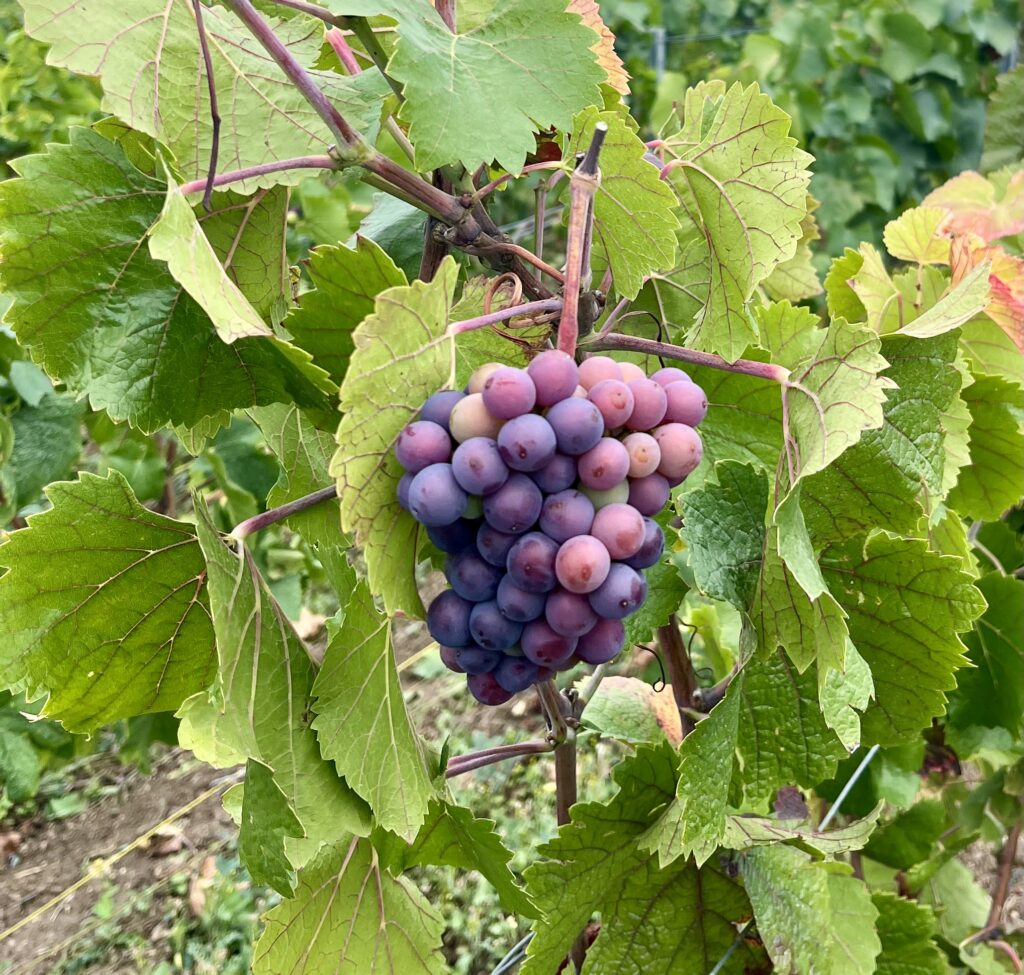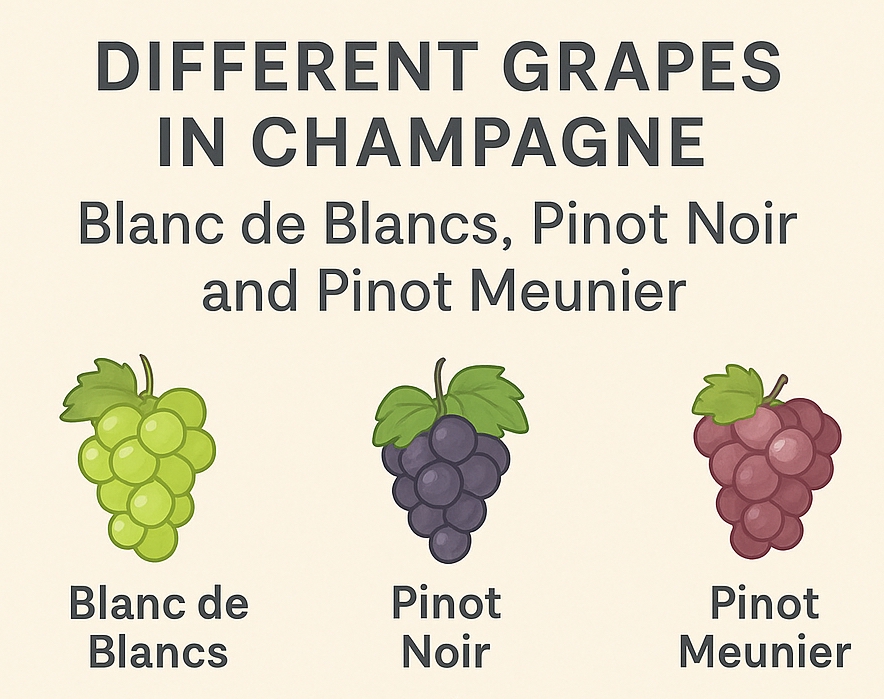Champagne is world-famous for its complex and elegant flavors, largely influenced by the grape varieties used. The three main grapes forming the foundation of Champagne are Chardonnay, Pinot Noir, and Pinot Meunier. Each brings its own character and grows in specific regions, shaping the final wine.
Blanc de Blancs – pure chardonnay notes
“Blanc de Blancs” literally means “white from white” – a Champagne made exclusively from Chardonnay grapes. Chardonnay lends a delicate, elegant, and fresh character, often with citrus and white flower notes.
These grapes are mainly grown in the Côte des Blancs region, where chalky soils and a cool climate create ideal conditions for developing subtle flavors. Blanc de Blancs Champagnes are usually light, sparkling, and perfect as an aperitif.
Pinot Noir – structure and depth
Pinot Noir is a red grape that adds body, structure, and richness to Champagne. Although red, the grapes are carefully pressed to produce a clear juice suitable for sparkling wine. Pinot Noir contributes ripe red fruit flavors and a fuller mouthfeel.
It is mainly grown in Montagne de Reims and Vallée de la Marne, where cool nights and sunny days ensure ripe, aromatic grapes. Pinot Noir is essential for rosé Champagne and forms the backbone of many classic blends.

Pinot Meunier – softness and fruitiness
Pinot Meunier is also a red grape but gives Champagne more softness and fruit-forward notes, such as apple and pear. It thrives in younger Champagnes, adding approachability and a rounded texture.
This grape grows well in Vallée de la Marne, where heavier soils and a cooler climate allow steady, balanced ripening. Pinot Meunier is often the secret behind Champagnes that are enjoyable even in their youth.
Summary
- Blanc de Blancs (Chardonnay) – delicate, citrusy, from Côte des Blancs.
- Pinot Noir – full-bodied, structured, from Montagne de Reims and Vallée de la Marne.
- Pinot Meunier – soft, fruity, from Vallée de la Marne.
Understanding these grape varieties and their origins makes Champagne tasting even more enjoyable – every sip tells the story of its place and character.
